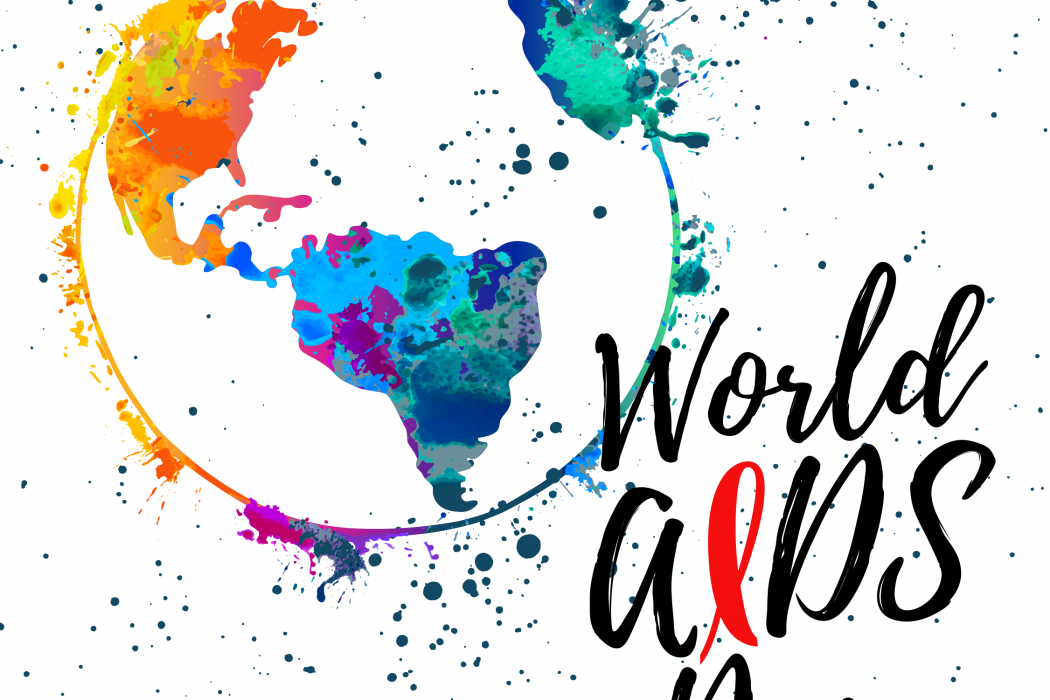(Photo Credits: CDC.gov)
Today—December 1, 2020—is World AIDS Day.
Every year, on this day, people and communities around the world take the time to remember the millions of people who died from HIV/AIDS these past four decades, to celebrate “our achievements over the past year,” and to pledge “to work in even more inclusive and innovative ways over the coming year.”
For World AIDS Day, we’re uniting with others around the world to prevent HIV, support people with HIV, and remember those who have lost their lives to an HIV-related illness.#WorldAIDSDay #WAD2020 #StopHIVTogether #EndHIVEpidemic pic.twitter.com/Z6lwE6gH7N
— CDC HIV/AIDS (@CDC_HIVAIDS) December 1, 2020
Why continue to commemorate World AIDS Day though?
It’s because “HIV, the virus that causes AIDS, is one of the world’s most serious public health challenges,” says HIV.gov. In fact, over 32.7 million lives were lost to AIDS-related illnesses since the beginning of the epidemic and today, over 38 million people are living with HIV/AIDS globally. This is why now, more than ever, it is important that the whole world is committed to “stopping new HIV infections and ensuring that everyone with HIV has access to HIV treatment.” To learn more about HIV/AIDS by the number, read here.
This year’s theme for World AIDS Day 2020 in the US is Ending the HIV/AIDS Epidemic: Resilience and Impact.
According to HIV.gov, 2020 has been particularly challenging for the HIV community because of the challenges brought about by COVID-19. HIV.gov said that “COVID-19 has not only forced us to adapt our response to HIV/AIDS in communities to ensure continuity of services, but also reinforced the urgency of ending the HIV/AIDS epidemic in the U.S. and around the world.” For more information about COVID-19 and people living with HIV, read here.
HIV Testing in #Galway next week by #sexualhealthwst#GaySwitchBoardIreland #SexualHealth #Galway #EastGalway #SouthGalway #HIVTesting #LGBT #LGBTQIA #GaySwitchboard #RapidTest #WorldAIDSDay #WorldAIDSDay2020 pic.twitter.com/aONBRm0ldW
— Gay Switchboard (@GaySwitchboard) November 25, 2020
UNAIDS, on the other hand, has chosen Global Solidarity, Shared Responsibility as this year’s theme for World AIDS Day.
Amakobe Sande, the interim United Nations resident coordinator in China, highlighted the threats brought about by the COVID-19 pandemic during her speech for the 2020 World AIDS Day. She said:
<blockquote>This year’s World AIDS Day is like no other. The COVID-19 pandemic is threatening the progress that the world has made in health and development, including the gains we have made against HIV over the past four decades.</blockquote>
Further, Sande emphasized that “Global problems need global solidarity,” emphasizing that we cannot “rest on our laurels especially because we are now fighting two colliding epidemics of HIV and COVID-19.” She added, “In responding to COVID-19, the world cannot make the same mistakes it made in the fight against HIV.”
Sande also repeated part of the UNAIDS secretary-general’s World AIDS Day statement:
Despite significant successes, the AIDS emergency is not over. HIV still infects 1.7 million people each year and kills some 690,000. And inequalities mean that those who are the least able to stand up for their rights are still the most affected.
A rapid #HIV self-test can done at home or in a private location.
— CDC HIV/AIDS (@CDC_HIVAIDS) November 30, 2020
Results can be produce within 20 minutes.
You can buy one at a pharmacy, online or from a local health department.
Learn more: https://t.co/bDlneTjumo#StopHIVTogether #WorldAIDSDay pic.twitter.com/uRBIByhz6s
While indeed, we cannot rest on our laurels yet just as Sande had said, it is also important to look back and see how far we have come.
Just recently, for example, US had approved a breakthrough HIV test that not only diagnose HIV but also simultaneously measures a person’s viral load thereby allowing doctors to begin the patient’s treatment right away, Gay Star News (GSN) reports.
The test, called Aptima HIV-1 Quant Dx by Hologic, has recently been approved by the US FDA making it the first diagnostic test that not only detects the virus itself but also the person’s viral load.
Before this development, says GSN, it takes weeks and a number of clinic visits and tests for the newly-diagnosed HIV patients to “work out their viral load” thereby delaying their treatment for weeks.
In a statement, Kevin Thornal, president of diagnostic solutions at Hologic, said:
This is an exciting new claim for our highly sensitive and reliable HIV test because it has the potential to improve patient care. A simultaneous viral load measurement with diagnosis will allow health care providers to guide treatment choices for patients to begin therapy immediately.
Thornal added, “The dual claim will also benefit our clinical laboratory customers, who continuously seek to consolidate their testing as much as possible onto one automated platform.”
According to Hologic, their test runs on an automated sample-to-result system called Panther and the company have so far, over 2,250 clinical diagnostic laboratories with Panther systems across the globe.
In collaboration with Council Member @Vanessalgibson and community partners, our office will offer free COVID-19 and HIV testing, resources, and more on Tuesday, December 1.#WorldAIDSDay #WorldAIDSDay2020 pic.twitter.com/hBE902WHV9
— Office of the Public Advocate Jumaane D. Williams (@nycpa) November 27, 2020










. . . You know, Covid-19 is another situation, exposing how irresponsible many are really selfish, self-centered people are. Before that yes, HIV/Aids has exposed how rampant the irresponsible behavior of the masses of gay men are, no wonder among many heteros, it still is a “gay disease.”
Hyper-sexuality is really a problem all these many years later, “1,7 million per year new infections” wow, all you have to do is use a condom.
Lamar:
The masses do not listen; they never did and they never will. Common sense and the concern of community are, generally, not the bastion of the masses.
The use of a condom is common sense, practical and all encompassing. Today’s condoms are well manufactured so they do not tear…unless, their size is not taken into consideration.
Irresponsibility is very much the norm today as this country espouses “The Rights Of The Individual…Over The Rights Of Society.”
Hence, socially transmitted deseases fall under the umbrella of individual rights instead of society’s rights.
Thus continued infection and contiguous reinfections.
Reply to John…. Yeah, get HIV and die, Dave, die real soon! Better still, get a gun and get it over with, we can’t stand listening to ur liberal bullshit anymore!